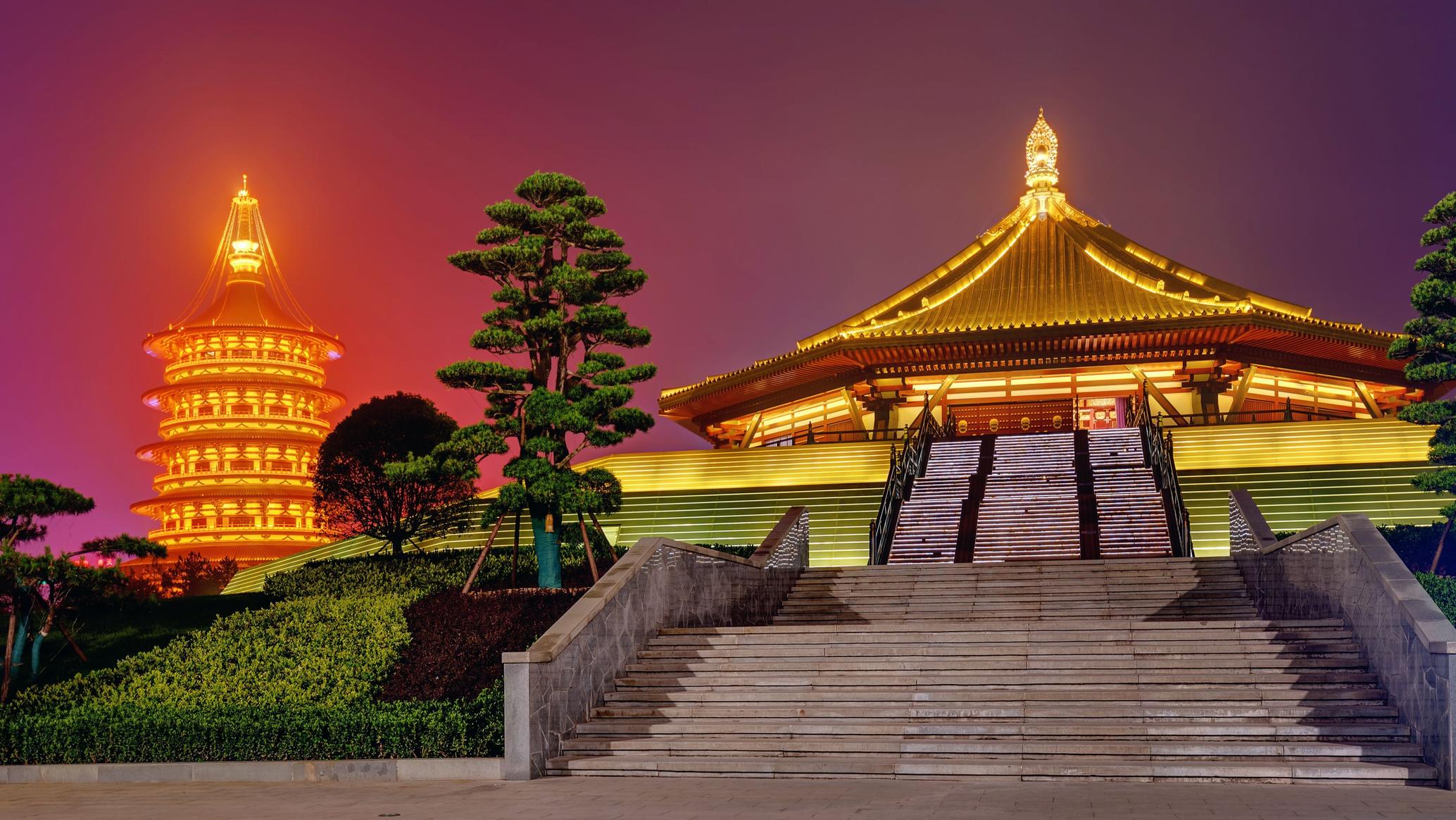
Luoyang, located in central China’s Henan province, is a city brimming with history, culture, and fascinating tales. As one of the oldest continuously inhabited cities in the world, Luoyang has a rich and storied past that dates back over 4,000 years. From ancient capitals to Buddhist cave temples, this dynamic city offers a treasure trove of historical and archaeological wonders.
But Luoyang is not just steeped in the past; it is also a vibrant and modern metropolis. With its booming economy, impressive skyline, and array of culinary delights, Luoyang merges the old and the new in a captivating way.
In this article, we will delve into 39 fascinating facts about Luoyang. From its famous UNESCO World Heritage Sites to its unique cultural traditions, you will discover why Luoyang is a city that should be on every traveler’s bucket list.
Key Takeaways:
- Luoyang, an ancient city in China, is famous for its peony flowers, Kung Fu, and rich history as a capital of various dynasties. It’s a must-visit for travelers seeking an authentic Chinese experience.
- Luoyang offers a vibrant cultural scene, traditional festivals, and a warm local community. From ancient pagodas to delicious cuisine, the city has something for everyone to explore and enjoy.
Luoyang is an ancient city located in Henan Province, China.
Luoyang has a rich history dating back over 4,000 years, making it one of the oldest continuously inhabited cities in China.
The city served as the capital of various dynasties in ancient China.
Luoyang was the capital of several dynasties, including the Eastern Zhou, Eastern Han, and Northern Wei dynasties.
Luoyang is often referred to as the “City of Peonies”.
The city is famous for its peony flowers, and it holds an annual Peony Festival, attracting visitors from all over the world.
The Longmen Grottoes in Luoyang are a UNESCO World Heritage site.
These ancient Buddhist cave temples are renowned for their intricate stone carvings and are considered one of China’s most significant cultural treasures.
Luoyang is known as the birthplace of Chinese Kung Fu.
The city has a long tradition of martial arts, and many famous Kung Fu masters have hailed from Luoyang.
The famous Chinese philosopher Confucius once visited Luoyang.
During his travels, Confucius made a stop in Luoyang and left a lasting influence on the city’s culture and philosophy.
Luoyang was an important center for silk production during ancient times.
The city played a crucial role in the development of the Silk Road and was a hub for silk trading.
The Shaolin Temple, the birthplace of Shaolin Kung Fu, is located near Luoyang.
Shaolin Kung Fu is one of the most famous martial arts styles in the world, and the Shaolin Temple attracts thousands of visitors each year.
Luoyang is home to the White Horse Temple, the first Buddhist temple in China.
Established in 68 AD, the temple has a rich history and is an important pilgrimage site for Buddhists.
The city has a well-preserved ancient city wall.
The Luoyang Ancient City Wall, built during the Tang Dynasty, still stands today and offers a glimpse into the city’s past.
Luoyang is considered one of the cradles of Chinese civilization.
The city has been a center of culture, art, and education throughout history, contributing significantly to China’s cultural heritage.
The famous Chinese novel, “A Dream of Red Mansions,” was based on a story from Luoyang.
This literary masterpiece by Cao Xueqin depicts the rise and fall of a noble family and is considered one of the greatest works of Chinese literature.
Luoyang is known for its delicious cuisine.
The local cuisine features a variety of flavors, including the famous Luoyang Water Banquet, which consists of various dishes served in a water-filled table.
Luoyang is home to the Luoyi Opera, a traditional Chinese opera style.
This unique local opera is renowned for its elaborate costumes, mesmerizing music, and expressive performances.
The ancient city of Luoyang has been featured in many Chinese films and TV dramas.
Its rich history and beautiful architecture make it a popular backdrop for historical productions.
Luoyang is famous for its traditional Chinese lantern festivals.
During these festivals, thousands of colorful lanterns are lit up, creating a magical atmosphere in the city.
The White Hen Temple in Luoyang is dedicated to the well-known Chinese poet Du Fu.
Du Fu was one of the greatest poets of the Tang Dynasty, and the temple honors his contributions to Chinese literature.
Luoyang is home to the China National Flower Garden.
This expansive garden showcases various flowers and plants from different regions of China, offering a picturesque landscape for visitors.
The city has a bustling night market.
The Luoyang Night Market is a vibrant hub of activity, offering a wide range of street food, local crafts, and entertainment.
Luoyang is a major transportation hub in central China.
The city has an extensive railway network and is well-connected to other major cities in China.
The Luoyang Museum houses a vast collection of artifacts from the city’s rich history.
Visitors can explore artifacts dating back thousands of years, providing insights into the region’s cultural and historical significance.
Luoyang is known for its traditional Chinese medicine practices.
The city has a long history of herbal medicine and is home to many renowned medical practitioners.
The Luoyang Ancient Tombs Museum contains the tombs of emperors from various dynasties.
This museum offers a glimpse into the burial practices and royal customs of ancient China.
Luoyang hosts the China Peony Festival every April.
During this festival, the city is adorned with beautiful peony displays, attracting flower enthusiasts from around the world.
Luoyang is home to the Luoyang Institute of Science and Technology.
This prestigious institution is known for its research and innovation in the fields of science, engineering, and technology.
Luoyang is situated along the banks of the Yellow River.
The Yellow River, known as the “Mother River” in China, has played a vital role in the development of the region.
The city has a pleasant climate, with hot summers and mild winters.
Luoyang experiences distinct seasons, making it an ideal destination to visit throughout the year.
Luoyang is famed for its traditional handicrafts, including pottery, lacquerware, and silk embroidery.
Visitors can explore local workshops and markets to witness the skilled craftsmanship of these traditional arts.
The Luoyang Ancient Sports Park offers a variety of recreational activities.
Visitors can enjoy traditional Chinese sports, such as archery, martial arts, and dragon boat racing, in a beautiful natural setting.
Luoyang is renowned for its traditional Chinese festivals.
From the Lantern Festival to the Dragon Boat Festival, the city celebrates a range of cultural events throughout the year.
The Luoyang Museum of Folk Customs showcases the local customs and traditions of the region.
Visitors can learn about the unique rituals, costumes, and folk arts of Luoyang and its surrounding areas.
Luoyang is a popular destination for pilgrimage due to its numerous temples and sacred sites.
People from different spiritual backgrounds come to Luoyang to seek blessings and enlightenment.
The Guanlin Temple in Luoyang is dedicated to the Chinese military general Guan Yu.
Guan Yu is revered as a symbol of loyalty and righteousness and is worshipped by many.
Luoyang is a cultural melting pot.
The city has been influenced by various ethnic groups and is a reflection of China’s diverse cultural heritage.
Luoyang is home to many ancient pagodas.
These towering structures hold great historical and architectural significance, attracting visitors with their intricate designs.
The city has a vibrant performing arts scene.
From traditional Chinese opera to modern theater productions, Luoyang offers a wide range of performances for art enthusiasts.
Luoyang is known for its traditional paper-cutting art.
This intricate craft involves cutting delicate patterns and designs out of paper, showcasing the creativity and skill of local artists.
The Luoyang Ancient Art Museum houses a collection of ancient paintings and calligraphy.
Art enthusiasts can admire works from different periods of Chinese history and gain insights into the development of traditional art.
Luoyang has a warm and welcoming local community.
Visitors can experience the hospitality and friendliness of the residents, adding to the charm of the city.
These 39 facts about Luoyang highlight its historical, cultural, and natural attractions, making it a must-visit destination for travelers seeking an authentic Chinese experience.
Conclusion
Luoyang, with its rich history and cultural heritage, offers a fascinating glimpse into ancient China. From its awe-inspiring temples and caves to its beautiful natural landscapes, the city has something to offer for every traveler. Whether you are interested in exploring historical sites, experiencing traditional Chinese customs, or indulging in delicious local cuisine, Luoyang has it all.
With its convenient transportation links and friendly locals, Luoyang is also a great destination for tourists. So, if you’re planning your next trip to China, don’t forget to include Luoyang in your itinerary. You won’t be disappointed!
FAQs
1. What is Luoyang famous for?
Luoyang is famous for its historical sites, including the Longmen Grottoes, White Horse Temple, and Shaolin Temple. It is also known for being the ancient capital of many dynasties, such as the Eastern Zhou, Han, Wei, Jin, and Tang dynasties.
2. How do I get to Luoyang?
You can reach Luoyang by air, train, or bus. Luoyang has its own airport, Luoyang Beijiao Airport, with both domestic and international flights. It is also well-connected by train and bus to other major cities in China.
3. What is the best time to visit Luoyang?
The best time to visit Luoyang is during spring (April to June) and autumn (September to October) when the weather is mild and pleasant. These seasons are ideal for exploring the city’s outdoor attractions and enjoying cultural festivals.
4. What should I eat in Luoyang?
Luoyang is famous for its local cuisine, particularly its Luoyang Water Banquet, which consists of various dishes served in small bowls of soup. Other popular local dishes include Luoyang Shui Mantou (steamed buns in soup) and Guan Tang Bao (soup-filled buns).
5. Can I visit the Longmen Grottoes in a day?
Yes, you can visit the Longmen Grottoes in a day. The grottoes are located approximately 12 kilometers south of Luoyang city and can be easily reached by bus or taxi. It is recommended to allocate at least half a day to explore the grottoes and appreciate their intricate carvings.
Luoyang's rich history and cultural significance make it a captivating destination for anyone interested in Chinese civilization. From ancient capitals to modern marvels, this city offers endless opportunities for exploration and discovery. For those curious about the life and work of Sima Qian, a pioneering Chinese historian, or eager to learn more about Henan's thriving football scene, Luoyang serves as an excellent starting point. Immerse yourself in the fascinating stories and hidden treasures that await in this enchanting city and beyond.
Was this page helpful?
Our commitment to delivering trustworthy and engaging content is at the heart of what we do. Each fact on our site is contributed by real users like you, bringing a wealth of diverse insights and information. To ensure the highest standards of accuracy and reliability, our dedicated editors meticulously review each submission. This process guarantees that the facts we share are not only fascinating but also credible. Trust in our commitment to quality and authenticity as you explore and learn with us.


